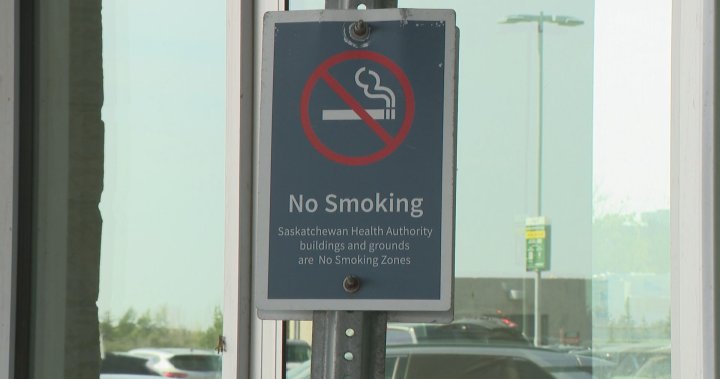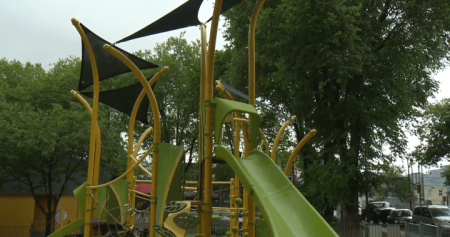James McCrimmon is facing the immense stress of caring for his critically ill son, Isaac, who was diagnosed with leukemia last April. The family moved to Saskatoon from Dauphin, Man., for Isaac’s treatment, and he has since relapsed and undergone a bone marrow transplant in Winnipeg. Now, Isaac is in the intensive care unit at Saskatoon’s Jim Pattison Children’s Hospital, battling infections and other medical issues as he recovers from leukemia. Despite all of this, McCrimmon is also concerned about shielding his son from second-hand smoke when entering and exiting the hospital, where he often encounters crowds of smokers at the front entrance.
McCrimmon has expressed frustration with the number of people smoking on hospital grounds, particularly near the entrance, despite multiple “no smoking” signs. He believes that better enforcement by security is needed to discourage smoking in these areas. In response to these concerns, the Saskatchewan Health Authority (SHA) stated that smoking on their properties is an ongoing issue and that they discourage smoking outside designated areas. The SHA also mentioned that protective services officers patrol their facilities to monitor smoking activity, indicating that efforts are being made to address the problem.
The stress and anxiety of having a critically ill child are already overwhelming for McCrimmon, and the added challenge of navigating through crowds of smokers at the hospital entrance only adds to this burden. Isaac’s compromised immune system and sensitivity to smoke make it essential for him to avoid exposure to second-hand smoke, further complicating their hospital visits. Despite the efforts of the SHA to discourage smoking on hospital grounds, the issue persists, leaving families like the McCrimmons vulnerable to the harmful effects of second-hand smoke.
As Isaac continues his treatment and recovery in the hospital, McCrimmon remains focused on advocating for better enforcement of smoking regulations on hospital grounds to protect vulnerable patients and their families. The presence of smokers near hospital entrances poses a significant health risk for individuals like Isaac, who are already dealing with serious medical conditions. By raising awareness of this issue and calling for stricter enforcement measures, McCrimmon hopes to create a safer and healthier environment for all patients, families, and staff at the hospital.
It is evident that the issue of smoking on hospital grounds is a complex and ongoing concern that requires coordinated efforts from healthcare authorities, security personnel, and the community to address effectively. While the SHA has implemented patrols and measures to discourage smoking outside of designated areas, further action may be needed to ensure compliance and protect the health of patients and visitors. With the support of families like the McCrimmons, who are speaking out about their experiences and advocating for change, there is hope for a future where hospitals are smoke-free environments where everyone can feel safe and supported.
In conclusion, James McCrimmon’s story highlights the challenges faced by families dealing with serious illnesses and the additional stress caused by environmental factors like second-hand smoke. By sharing his experiences and advocating for better enforcement of smoking regulations on hospital grounds, McCrimmon is standing up for his son and others in similar situations. It is essential for healthcare authorities to take decisive action to address this issue and create smoke-free environments that prioritize the health and well-being of patients, families, and staff. Through collective efforts and ongoing awareness, positive changes can be made to ensure that hospitals are safe and supportive spaces for everyone.















